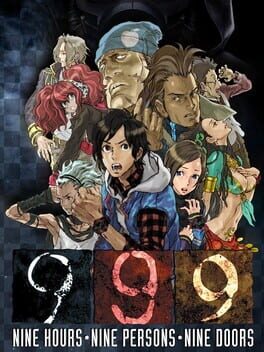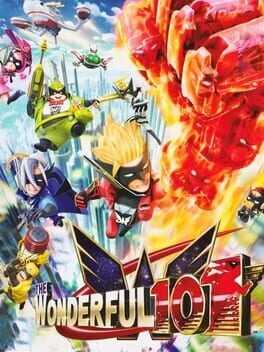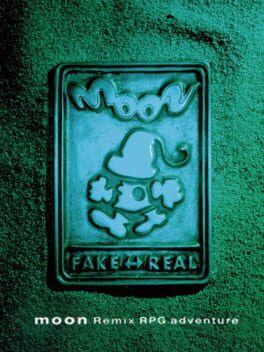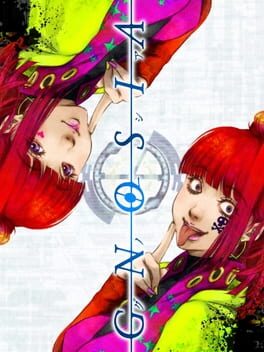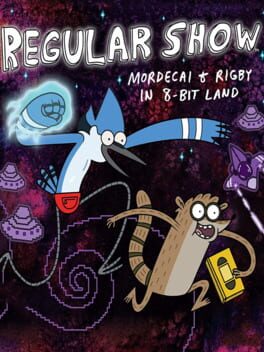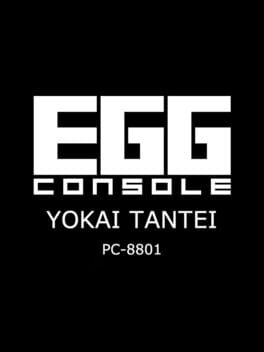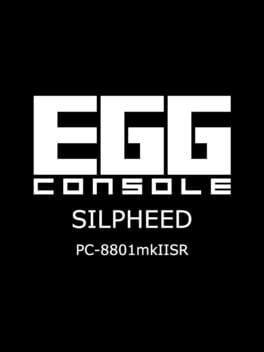ReadOnlyMuseum
Bio
Hey there, if you're into game history and design, I run a YouTube channel in my spare time called Read Only Museum; if you like videos by StopSkeletons or Jeremy Parish, you might enjoy it! Click that YouTube link up there to give it a look
Hey there, if you're into game history and design, I run a YouTube channel in my spare time called Read Only Museum; if you like videos by StopSkeletons or Jeremy Parish, you might enjoy it! Click that YouTube link up there to give it a look
Badges

Trend Setter
Gained 50+ followers

Best Friends
Become mutual friends with at least 3 others

Roadtrip
Voted for at least 3 features on the roadmap

GOTY '23
Participated in the 2023 Game of the Year Event

Liked
Gained 10+ total review likes

2 Years of Service
Being part of the Backloggd community for 2 years

GOTY '22
Participated in the 2022 Game of the Year Event

Organized
Created a list folder with 5+ lists

Popular
Gained 15+ followers

Shreked
Found the secret ogre page

Noticed
Gained 3+ followers

N00b
Played 100+ games
Favorite Games
220
Total Games Played
006
Played in 2024
1454
Games Backloggd
Recently Played See More
Recently Reviewed See More
The quintessential WayForward licensed game; a good skeletal foundation, but with no meat on its bones.
Things start out promising enough, with both Mordecai and Rigby controlling satisfyingly, and a promising central gimmick where you switch between gameplay and perspective on the fly (ground-based platformer, 2D shooter, top-down shooter) but it feels more like an unfinished proof-of-concept rather than a fully realized title. The level design is about as dry as it gets, with drab, featureless platforms and mazes lacking any sort of variety or creativity (a common problem for licensed WayForward titles, believe it or not).
Enemies are listlessly plopped into the environment with no real rhyme or reason, and worse yet, the hit detection is atrocious, requiring you to land pixel-perfect, dead center on their sprites, which doesn't really work seeing as how many of them are thin, small or both (there's a reason why Mario and Sonic enemies are always short and squat). As a result, you'll usually end up avoiding enemies altogether, which is a death sentence for a 2D platformer.
If there's one redeeming, fully realized quality, it'd be the presentation. Jake Kaufman fires on all cylinders with the BGM yet again, and the visuals nail the look of the show, all filtered through the gorgeous spritework that we've come to expect from WayForward, not to mention great little touches like the space background being recycled from the title screen, as it is in the series. It's clear that the dev team were fans of the source material, and by that metric it might be worth a cursory glance for diehard fans of the show, but the cool central mechanic is wasted on a game that feels like it was rushed to its deadline by the licenseholders, a familiar tragic tale for many licensed games.
Things start out promising enough, with both Mordecai and Rigby controlling satisfyingly, and a promising central gimmick where you switch between gameplay and perspective on the fly (ground-based platformer, 2D shooter, top-down shooter) but it feels more like an unfinished proof-of-concept rather than a fully realized title. The level design is about as dry as it gets, with drab, featureless platforms and mazes lacking any sort of variety or creativity (a common problem for licensed WayForward titles, believe it or not).
Enemies are listlessly plopped into the environment with no real rhyme or reason, and worse yet, the hit detection is atrocious, requiring you to land pixel-perfect, dead center on their sprites, which doesn't really work seeing as how many of them are thin, small or both (there's a reason why Mario and Sonic enemies are always short and squat). As a result, you'll usually end up avoiding enemies altogether, which is a death sentence for a 2D platformer.
If there's one redeeming, fully realized quality, it'd be the presentation. Jake Kaufman fires on all cylinders with the BGM yet again, and the visuals nail the look of the show, all filtered through the gorgeous spritework that we've come to expect from WayForward, not to mention great little touches like the space background being recycled from the title screen, as it is in the series. It's clear that the dev team were fans of the source material, and by that metric it might be worth a cursory glance for diehard fans of the show, but the cool central mechanic is wasted on a game that feels like it was rushed to its deadline by the licenseholders, a familiar tragic tale for many licensed games.
Yokai Tantei isn't trying to hide anything; it wears its influence on its sleeve, that influence being Hudson's flagship creation, Bomberman.
You control a little Medama-Oyaji lookalike, tasked with clearing out a maze swarming with enemies (you can choose between Japanese yokai or western Universal monsters, which is a nice touch). Unlike Bomberman, your form of attack is a bit more direct, however, and this is where the the main hook of Yokai Tantei comes in.
Potentially taking influence from another Hudson creation, Binary Land, you shoot a fireball which can dart all around the maze, and is controlled contemporaneously with the main character. The two move at different speeds, and —much like Bomberman— the cross-shaped blast radiuses when you activate the fireball will kill you as well, so there's quite a bit to micromanage here.
When I first booted this one up, I didn't really care for it that much, as I thought the mazes were too cramped, and the spawn rates of the enemies were too unrelenting. That is, until I realized that the fireball can actually kill enemies by simply making normal contact with them. Once I got this, the game clicked; it's the classic temptation of risk vs. reward, whether you want to clear out enemies by firing point-blank, or risk trying to get a massive combo by blowing them all up at once for more points. I haven't figured it out completely, but it seems the enemies need to be hit at a specific angle from the fireball to die, so as not to ruin any combo potential.
As for this particular version, much like Relics (another Bothtec creation) the PC-88 version they chose to use isn't the best, but it's not as dire as Relics' 88 port was. It certainly looks better than the MSX version, but lacks the music of the other ports, though it's by no means a dealbreaker. The speed-up feature is perhaps more welcome here than any previous title, as it allows you to plow through the ridiculously slow loading times.
You control a little Medama-Oyaji lookalike, tasked with clearing out a maze swarming with enemies (you can choose between Japanese yokai or western Universal monsters, which is a nice touch). Unlike Bomberman, your form of attack is a bit more direct, however, and this is where the the main hook of Yokai Tantei comes in.
Potentially taking influence from another Hudson creation, Binary Land, you shoot a fireball which can dart all around the maze, and is controlled contemporaneously with the main character. The two move at different speeds, and —much like Bomberman— the cross-shaped blast radiuses when you activate the fireball will kill you as well, so there's quite a bit to micromanage here.
When I first booted this one up, I didn't really care for it that much, as I thought the mazes were too cramped, and the spawn rates of the enemies were too unrelenting. That is, until I realized that the fireball can actually kill enemies by simply making normal contact with them. Once I got this, the game clicked; it's the classic temptation of risk vs. reward, whether you want to clear out enemies by firing point-blank, or risk trying to get a massive combo by blowing them all up at once for more points. I haven't figured it out completely, but it seems the enemies need to be hit at a specific angle from the fireball to die, so as not to ruin any combo potential.
As for this particular version, much like Relics (another Bothtec creation) the PC-88 version they chose to use isn't the best, but it's not as dire as Relics' 88 port was. It certainly looks better than the MSX version, but lacks the music of the other ports, though it's by no means a dealbreaker. The speed-up feature is perhaps more welcome here than any previous title, as it allows you to plow through the ridiculously slow loading times.
Seeing the wireframes and polygons they were able to achieve on an 8-bit computer makes this a worthwhile experience, really showing how (between this and Thexder) Game Arts were programming magicians of the PC-88.
As for the gameplay, it's pretty good too, it's a lot more playable than some of the other Eggconsole rereleases, being a straightforward shmup. The genre was evolving rapidly at the time and it doesn't quite measure up to some of the shooters that were coming out for consoles and game centers, (Darius, Salamander, Fantasy Zone...) but it has some fun powerups and unique level design, with said powerups being put in purposeful locations relative to the hazards ahead. Being able to change your type of fire before each level is pretty sick too.
The one actual flaw is that the game's tilted perspective (à la Radar Scope) is just as disorienting as it is impressive, and you're better off sticking to the bottom of the screen, taking potshots from afar like an early Invaders clone, which doesn't feel nearly as good. Overall though, this is a technical marvel for the time, and worth checking out if you want to dive into some early Japanese computer titles that actually stand the test of time.
As for the gameplay, it's pretty good too, it's a lot more playable than some of the other Eggconsole rereleases, being a straightforward shmup. The genre was evolving rapidly at the time and it doesn't quite measure up to some of the shooters that were coming out for consoles and game centers, (Darius, Salamander, Fantasy Zone...) but it has some fun powerups and unique level design, with said powerups being put in purposeful locations relative to the hazards ahead. Being able to change your type of fire before each level is pretty sick too.
The one actual flaw is that the game's tilted perspective (à la Radar Scope) is just as disorienting as it is impressive, and you're better off sticking to the bottom of the screen, taking potshots from afar like an early Invaders clone, which doesn't feel nearly as good. Overall though, this is a technical marvel for the time, and worth checking out if you want to dive into some early Japanese computer titles that actually stand the test of time.
